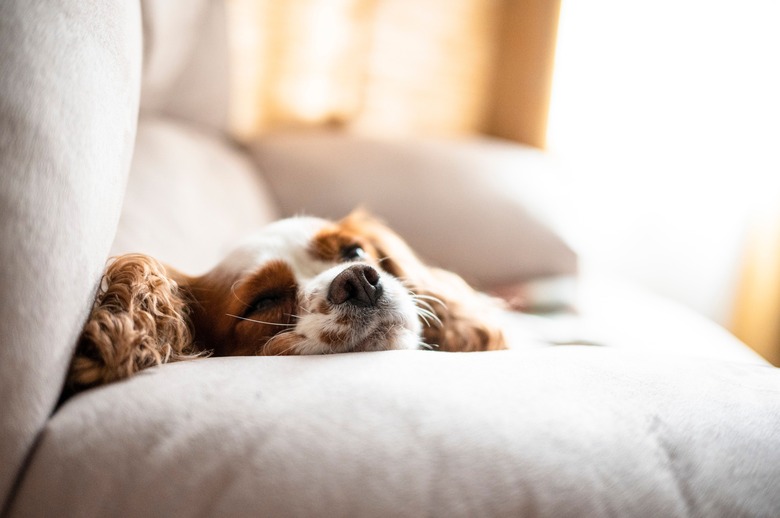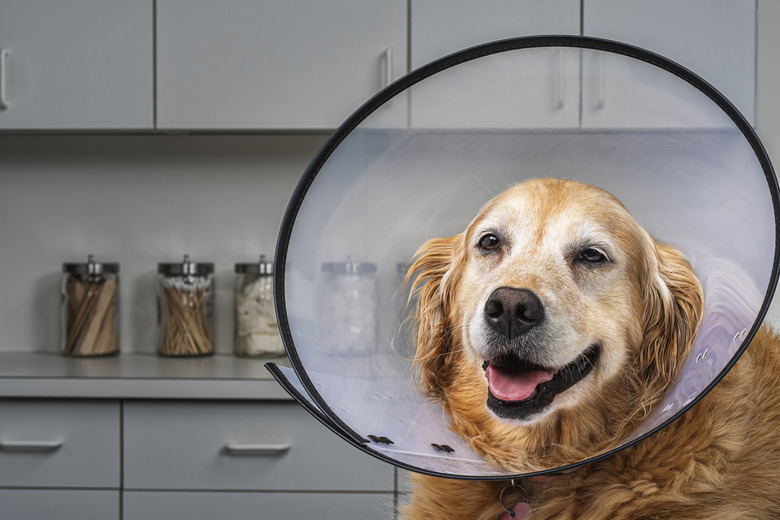How To Remove Surgical Staples On Dogs
Stainless steel surgical staples are often used to close incisions on dogs after surgery or to close wounds the dog may have sustained from an injury. Dissolvable suture material and surgical glue do not need to be removed because the body absorbs them. However, surgical staples will need to be removed two weeks after surgery to prevent the skin surrounding the staple from growing around the foreign object. Surgical staples on dogs are very easy to remove, but you need a special staple remover, though some care and caution must be practiced to prevent complications. It is recommended that you have a veterinary professional do this for you at an appointment.
Can you remove surgical dog staples at home?
Can you remove surgical dog
staples at home?
You should not remove surgical dog staples at home unless you talk to your veterinarian about it and they say it is safe to do so. However, it is recommended that you go to a veterinarian to have the surgical staples removed when possible.
Never attempt to remove surgical staples from a dog by yourself. Even if your dog is generally laid-back, they may become agitated, and you can injure them if you are trying to hold them securely and remove the staples at the same time. Do not remove staples before the recommended time period. Do not attempt to remove surgical staples that have been left in for too long. Contact your veterinarian for assistance.
If you begin to remove the surgical staples from your dog and find they don't come out easily or they are severely adhered to the skin, bring your dog to your veterinarian for staple removal. If a staple breaks, place a bandage over the broken staple to prevent it from snagging on anything and contact your veterinarian for assistance.
When should dog staples be removed?
When should dog staples be
removed?
Always try to go to your veterinarian to have the surgical staples removed from your dog. However, if you do need to remove them at home, make sure to contact your veterinarian and confirm that your dog's wound or incision site has healed appropriately to do so. It can depend on the type of surgery, but surgical staples are usually removed two weeks post-op.
Remove the surgical staples from your dog during a period of the day when they are most relaxed. If the dog becomes highly agitated by the procedure, try taking a break and return to the process in a few hours. Just make sure to cleanse the tools again before beginning.
This is how your veterinarian will remove your dog’s surgical staples
Your veterinarian will make sure the staples can be safely removed
Your veterinarian will examine your dog to make sure that the wound or surgical incision has healed properly. For a tele-health visit, you could take a picture of the surgical site and email it to your veterinary hospital so they can confirm if it's ready to have the staples removed. If the dog's incision has any drainage, separation of the skin edges, or signs of infection, the staples may need to be left in for longer than the usual two weeks to allow for it to fully heal. These are also signs that your dog needs to be seen by a veterinarian in order to prevent complications.
Cleaning the wound or incision area
if needed
If there is visible dirt or debris around the wound, your veterinarian will need to carefully clean the area using warm water. Sometimes, there will be scabs around the surgical staples. Don't try to pick these off. If the veterinarian starts to remove the staples and it forces scabs to come off the skin, they will want to wait. They may have you wait to remove the staples until after the scabs have fallen off on their own.
Treat the incision site if needed
If the staple removal is successful, there should be little to no bleeding afterwards. If there is a little bleeding from the staple removal, your veterinarian will apply gentle pressure. Talk to your veterinarian ahead of time to see if they want you to apply anything after the staple removal, such as an anti-bacterial ointment. Usually, these products are not necessary. Things like ointments and creams are often sticky and attract debris to the area. If your dog's skin is dry around the incision, ask your veterinarian what you can safely apply.
Some dogs will want to lick or itch the area after the staple removal. The best way to prevent this and support the healing process is to use an e-collar, or Elizabethan collar, on your dog. This will stop them from being able to reach the surgical wound or incision site.
What happens if a staple is left in a dog?
What happens if a staple is left
in a dog?
If a staple isn't removed from your dog's wound or incision site in the recommended time period, the skin surrounding the staple may start to grow around the staple. This makes the removal of the staple more difficult and can also lead to complications, like the development of an infection.
The bottom line
The bottom line
Your dog's skin staples should be removed approximately two weeks after the surgery date, assuming that everything has healed properly. Removing staples is best if done with an appointment with a veterinarian. If you talk to a veterinarian to confirm that surgical staple removal is safe for you to do at home, they will give you detailed instructions and make sure you have the right tools. If you are trying to remove the staples and encounter a problem, such as scabs starting to grow over the staple, you should leave it to be addressed by your DVM.

